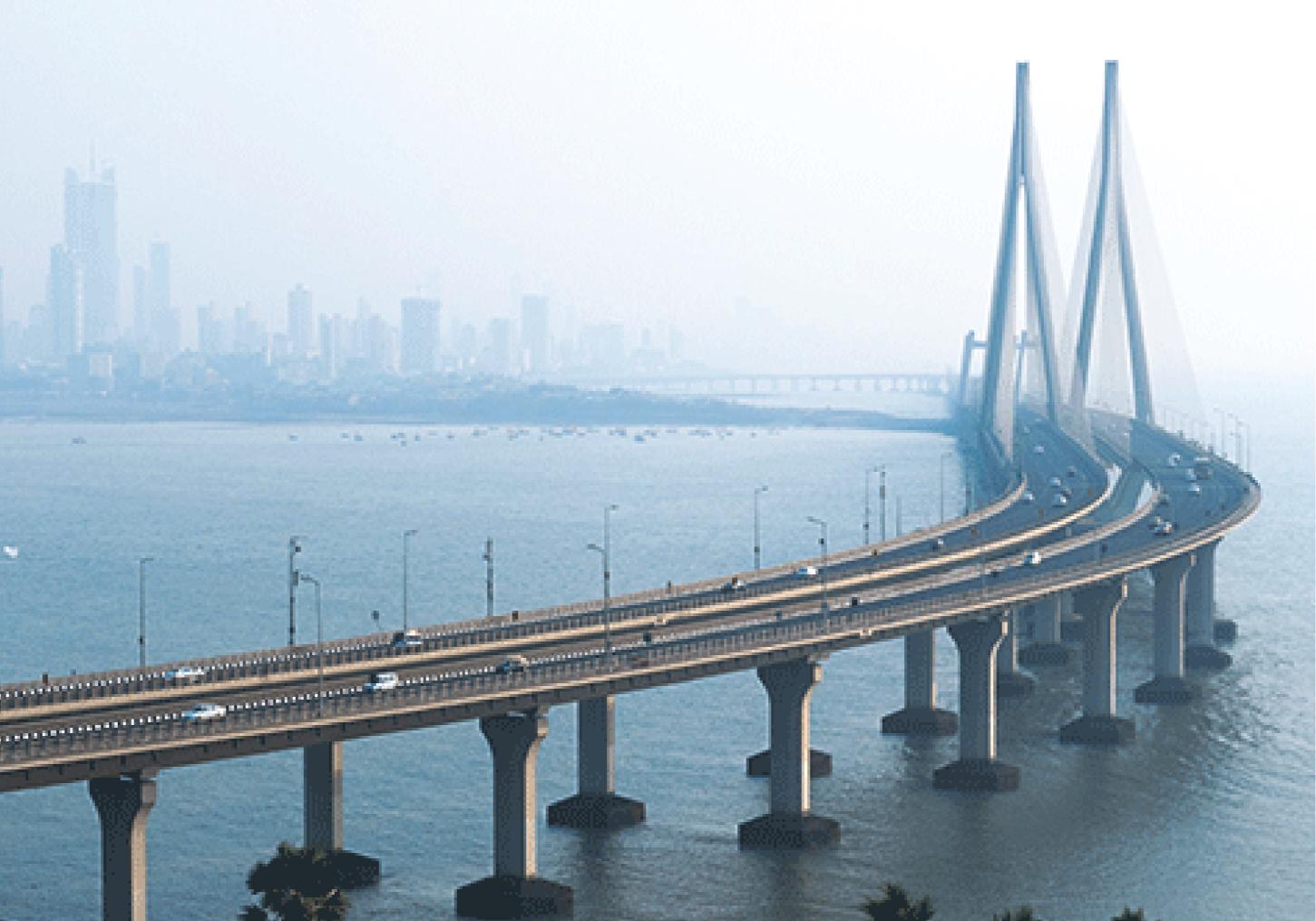
The recently completed Mumbai Trans Harbour Link (MTHL), also known as the Atal Setu, is a 21.8 km sea and the longest sea bridge in India connecting Mumbai city to the mainland. This infrastructure milestone has the potential to spur massive growth of a ‘Third Mumbai’ east across the harbor.
Mumbai has long suffered from inadequate infrastructure, given its limited land area of 468 sq km that houses over 21 million residents. The idea for an eastward sea link was first proposed in 1965 by architects Charles Correa, Pravina Mehta and engineer Shirish Patel. Their plan aimed to connect Sewri in Mumbai to Nhava Sheva across the harbor where the new port was planned. However, bureaucratic delays meant the project remained on paper for nearly six decades.
The MTHL project has now finally been executed as part of Mumbai’s $30 billion infrastructure overhaul. It forms a crucial east-west connector, along with upcoming projects in Mumbai like the Worli-Sewri link road, Coastal Road and a tunnel from Marine Drive to Eastern Freeway. Together, these aim to develop a circular connectivity across the elongated north-south geography of Mumbai.
The Mumbai Trans Harbour Link massively cuts travel time from Navi Mumbai to South Mumbai from 2 hours currently to just 30 minutes. This makes the property markets across the harbor highly attractive. The state government plans to develop a new business district, on the lines of Bandra Kurla Complex, on a 150-hectare plot at Kharghar, Navi Mumbai. Ambitious towns like Ulwe, Pen, Panvel and Uran are envisioned as the Third Mumbai.
The new connectivity can facilitate an economic triangle between Mumbai, Pune and Nashik – Maharashtra’s most prosperous belt. It can also link key zones like the Mumbai-Pune Expressway, Navi Mumbai airport and JNPT port opening new growth avenues. The MTHL project provides an opportunity for Maharashtra to develop its own ‘golden triangle’ of economic progress.
The Third Mumbai has already attracted interest from corporate giants Mukesh Ambani and Gautam Adani. Several leading developers like Hiranandani Group and Godrej have also acquired large land banks in the area in anticipation of the longest sea bridge in India. However, experts caution that the government should enable market forces and not treat this as a pure land monetization opportunity. Lessons should be learned from CIDCO’s handling of Navi Mumbai development in the previous decades.
As seen in China, a boom in construction in India can significantly boost economic growth and jobs. But sustainability requires proper housing and public transport provisions for all sections. The MTHL should have affordable tariffs and integration with public transport. The Sewri-Nhava Sheva link was conceived nearly 50 years ago but delayed by red tape and lobbying. Timely execution could have decongested Mumbai and distributed growth equitably across the geography.
Going forward, the focus should be on enabling inclusive development through sufficient public transport access and affordable housing around the Mumbai Trans Harbour Link. This will prevent unbridled profiteering by builders at the cost of the common man. With apt policies and public-private participation, the MTHL can trigger a new phase of all-round growth for India’s business capital.